Hadis Anahideh
Building Trust in Black-box Optimization: A Comprehensive Framework for Explainability
Oct 18, 2024Abstract:Optimizing costly black-box functions within a constrained evaluation budget presents significant challenges in many real-world applications. Surrogate Optimization (SO) is a common resolution, yet its proprietary nature introduced by the complexity of surrogate models and the sampling core (e.g., acquisition functions) often leads to a lack of explainability and transparency. While existing literature has primarily concentrated on enhancing convergence to global optima, the practical interpretation of newly proposed strategies remains underexplored, especially in batch evaluation settings. In this paper, we propose \emph{Inclusive} Explainability Metrics for Surrogate Optimization (IEMSO), a comprehensive set of model-agnostic metrics designed to enhance the transparency, trustworthiness, and explainability of the SO approaches. Through these metrics, we provide both intermediate and post-hoc explanations to practitioners before and after performing expensive evaluations to gain trust. We consider four primary categories of metrics, each targeting a specific aspect of the SO process: Sampling Core Metrics, Batch Properties Metrics, Optimization Process Metrics, and Feature Importance. Our experimental evaluations demonstrate the significant potential of the proposed metrics across different benchmarks.
Fair Multivariate Adaptive Regression Splines for Ensuring Equity and Transparency
Feb 23, 2024Abstract:Predictive analytics is widely used in various domains, including education, to inform decision-making and improve outcomes. However, many predictive models are proprietary and inaccessible for evaluation or modification by researchers and practitioners, limiting their accountability and ethical design. Moreover, predictive models are often opaque and incomprehensible to the officials who use them, reducing their trust and utility. Furthermore, predictive models may introduce or exacerbate bias and inequity, as they have done in many sectors of society. Therefore, there is a need for transparent, interpretable, and fair predictive models that can be easily adopted and adapted by different stakeholders. In this paper, we propose a fair predictive model based on multivariate adaptive regression splines(MARS) that incorporates fairness measures in the learning process. MARS is a non-parametric regression model that performs feature selection, handles non-linear relationships, generates interpretable decision rules, and derives optimal splitting criteria on the variables. Specifically, we integrate fairness into the knot optimization algorithm and provide theoretical and empirical evidence of how it results in a fair knot placement. We apply our fairMARS model to real-world data and demonstrate its effectiveness in terms of accuracy and equity. Our paper contributes to the advancement of responsible and ethical predictive analytics for social good.
Hyperparameter Adaptive Search for Surrogate Optimization: A Self-Adjusting Approach
Oct 12, 2023



Abstract:Surrogate Optimization (SO) algorithms have shown promise for optimizing expensive black-box functions. However, their performance is heavily influenced by hyperparameters related to sampling and surrogate fitting, which poses a challenge to their widespread adoption. We investigate the impact of hyperparameters on various SO algorithms and propose a Hyperparameter Adaptive Search for SO (HASSO) approach. HASSO is not a hyperparameter tuning algorithm, but a generic self-adjusting SO algorithm that dynamically tunes its own hyperparameters while concurrently optimizing the primary objective function, without requiring additional evaluations. The aim is to improve the accessibility, effectiveness, and convergence speed of SO algorithms for practitioners. Our approach identifies and modifies the most influential hyperparameters specific to each problem and SO approach, reducing the need for manual tuning without significantly increasing the computational burden. Experimental results demonstrate the effectiveness of HASSO in enhancing the performance of various SO algorithms across different global optimization test problems.
Fairness and Bias in Truth Discovery Algorithms: An Experimental Analysis
Apr 25, 2023Abstract:Machine learning (ML) based approaches are increasingly being used in a number of applications with societal impact. Training ML models often require vast amounts of labeled data, and crowdsourcing is a dominant paradigm for obtaining labels from multiple workers. Crowd workers may sometimes provide unreliable labels, and to address this, truth discovery (TD) algorithms such as majority voting are applied to determine the consensus labels from conflicting worker responses. However, it is important to note that these consensus labels may still be biased based on sensitive attributes such as gender, race, or political affiliation. Even when sensitive attributes are not involved, the labels can be biased due to different perspectives of subjective aspects such as toxicity. In this paper, we conduct a systematic study of the bias and fairness of TD algorithms. Our findings using two existing crowd-labeled datasets, reveal that a non-trivial proportion of workers provide biased results, and using simple approaches for TD is sub-optimal. Our study also demonstrates that popular TD algorithms are not a panacea. Additionally, we quantify the impact of these unfair workers on downstream ML tasks and show that conventional methods for achieving fairness and correcting label biases are ineffective in this setting. We end the paper with a plea for the design of novel bias-aware truth discovery algorithms that can ameliorate these issues.
FairPilot: An Explorative System for Hyperparameter Tuning through the Lens of Fairness
Apr 10, 2023



Abstract:Despite the potential benefits of machine learning (ML) in high-risk decision-making domains, the deployment of ML is not accessible to practitioners, and there is a risk of discrimination. To establish trust and acceptance of ML in such domains, democratizing ML tools and fairness consideration are crucial. In this paper, we introduce FairPilot, an interactive system designed to promote the responsible development of ML models by exploring a combination of various models, different hyperparameters, and a wide range of fairness definitions. We emphasize the challenge of selecting the ``best" ML model and demonstrate how FairPilot allows users to select a set of evaluation criteria and then displays the Pareto frontier of models and hyperparameters as an interactive map. FairPilot is the first system to combine these features, offering a unique opportunity for users to responsibly choose their model.
Explainable Predictive Modeling for Limited Spectral Data
Feb 09, 2022



Abstract:Feature selection of high-dimensional labeled data with limited observations is critical for making powerful predictive modeling accessible, scalable, and interpretable for domain experts. Spectroscopy data, which records the interaction between matter and electromagnetic radiation, particularly holds a lot of information in a single sample. Since acquiring such high-dimensional data is a complex task, it is crucial to exploit the best analytical tools to extract necessary information. In this paper, we investigate the most commonly used feature selection techniques and introduce applying recent explainable AI techniques to interpret the prediction outcomes of high-dimensional and limited spectral data. Interpretation of the prediction outcome is beneficial for the domain experts as it ensures the transparency and faithfulness of the ML models to the domain knowledge. Due to the instrument resolution limitations, pinpointing important regions of the spectroscopy data creates a pathway to optimize the data collection process through the miniaturization of the spectrometer device. Reducing the device size and power and therefore cost is a requirement for the real-world deployment of such a sensor-to-prediction system as a whole. We specifically design three different scenarios to ensure that the evaluation of ML models is robust for the real-time practice of the developed methodologies and to uncover the hidden effect of noise sources on the final outcome.
Auditing Fairness and Imputation Impact in Predictive Analytics for Higher Education
Sep 13, 2021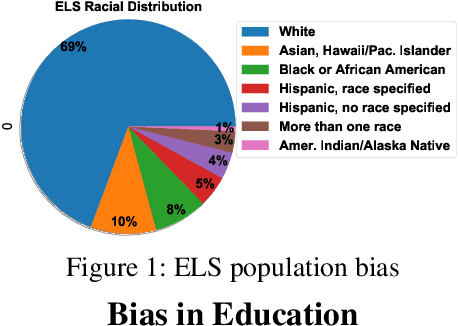
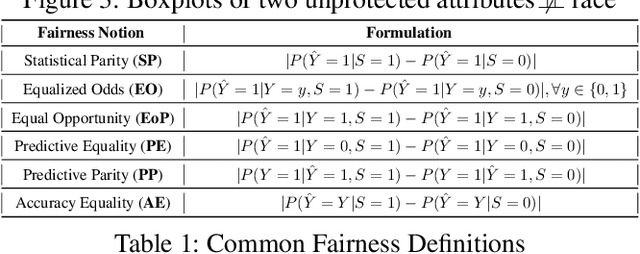
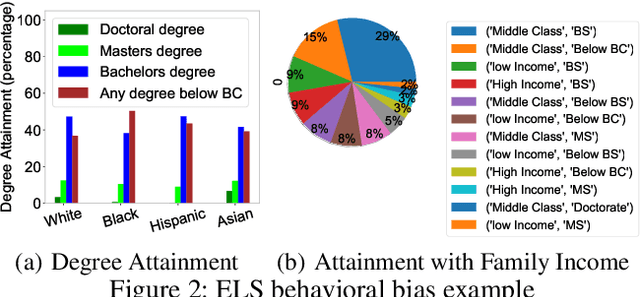
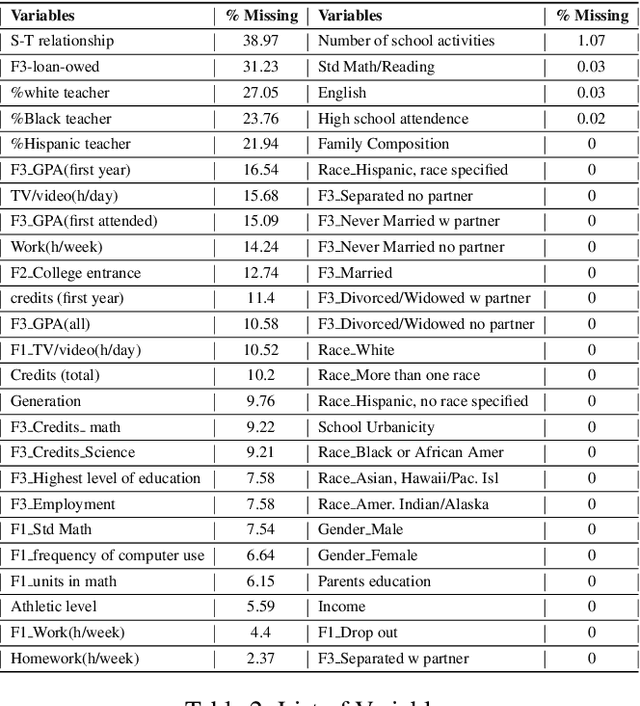
Abstract:Nowadays, colleges and universities use predictive analytics in a variety of ways to increase student success rates. Despite the potentials for predictive analytics, there exist two major barriers to their adoption in higher education: (a) the lack of democratization in deployment, and (b) the potential to exacerbate inequalities. Education researchers and policymakers encounter numerous challenges in deploying predictive modeling in practice. These challenges present in different steps of modeling including data preparation, model development, and evaluation. Nevertheless, each of these steps can introduce additional bias to the system if not appropriately performed. Most large-scale and nationally representative education data sets suffer from a significant number of incomplete responses from the research participants. Missing Values are the frequent latent causes behind many data analysis challenges. While many education-related studies addressed the challenges of missing data, little is known about the impact of handling missing values on the fairness of predictive outcomes in practice. In this paper, we set out to first assess the disparities in predictive modeling outcome for college-student success, then investigate the impact of imputation techniques on the model performance and fairness using a comprehensive set of common metrics. The comprehensive analysis of a real large-scale education dataset reveals key insights on the modeling disparity and how different imputation techniques fundamentally compare to one another in terms of their impact on the fairness of the student-success predictive outcome.
On the Choice of Fairness: Finding Representative Fairness Metrics for a Given Context
Sep 13, 2021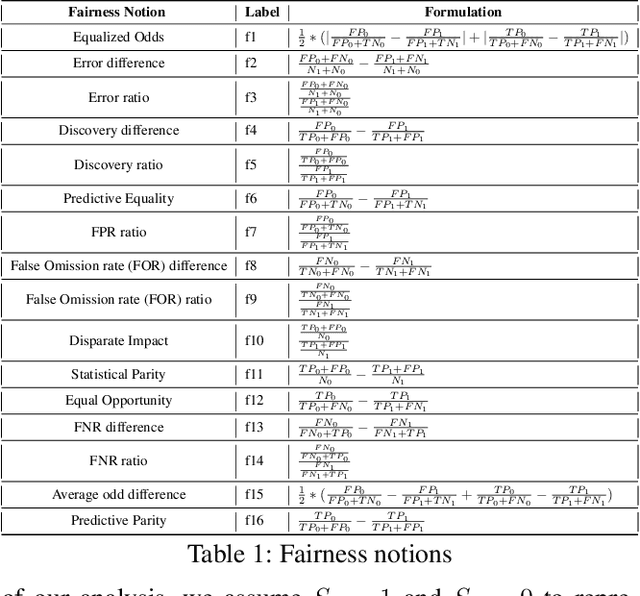
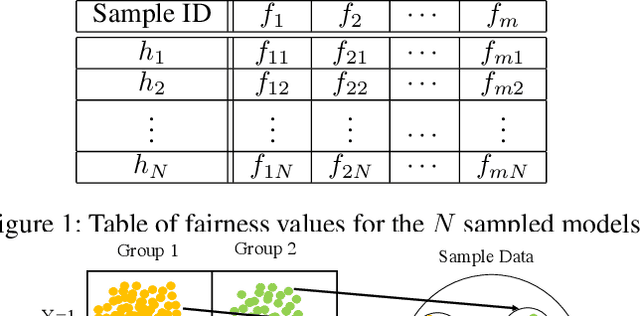
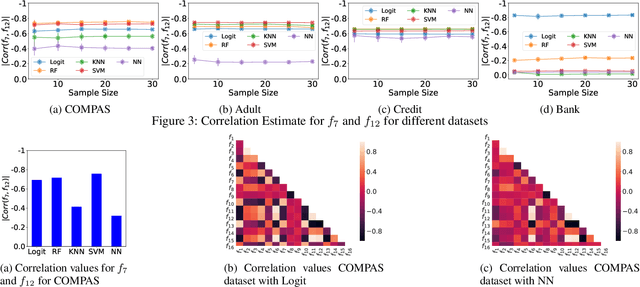

Abstract:It is of critical importance to be aware of the historical discrimination embedded in the data and to consider a fairness measure to reduce bias throughout the predictive modeling pipeline. Various notions of fairness have been defined, though choosing an appropriate metric is cumbersome. Trade-offs and impossibility theorems make such selection even more complicated and controversial. In practice, users (perhaps regular data scientists) should understand each of the measures and (if possible) manually explore the combinatorial space of different measures before they can decide which combination is preferred based on the context, the use case, and regulations. To alleviate the burden of selecting fairness notions for consideration, we propose a framework that automatically discovers the correlations and trade-offs between different pairs of measures for a given context. Our framework dramatically reduces the exploration space by finding a small subset of measures that represent others and highlighting the trade-offs between them. This allows users to view unfairness from various perspectives that might otherwise be ignored due to the sheer size of the exploration space. We showcase the validity of the proposal using comprehensive experiments on real-world benchmark data sets.
Fair Active Learning
Jul 01, 2020
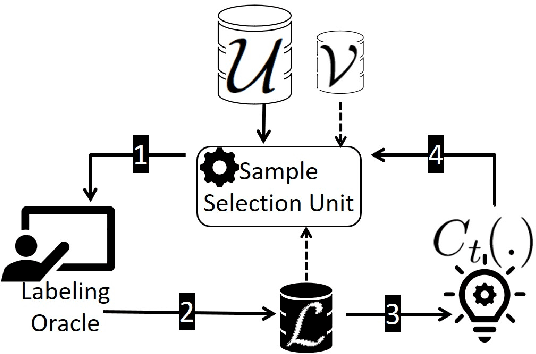
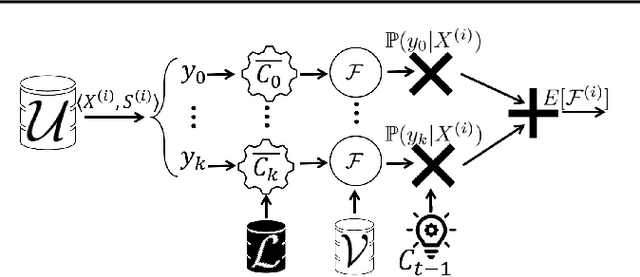
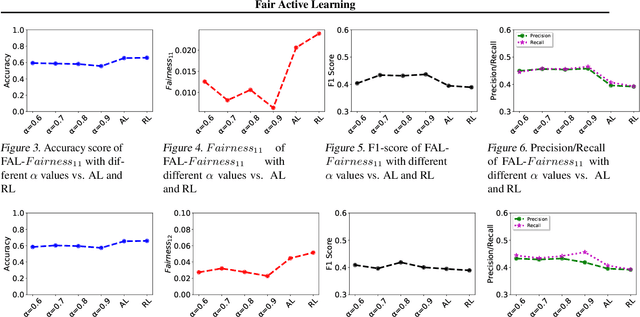
Abstract:Machine learning (ML) is increasingly being used in high-stakes applications impacting society. Therefore, it is of critical importance that ML models do not propagate discrimination. Collecting accurate labeled data in societal applications is challenging and costly. Active learning is a promising approach to build an accurate classifier by interactively querying an oracle within a labeling budget. We design algorithms for fair active learning that carefully selects data points to be labeled so as to balance model accuracy and fairness. Specifically, we focus on demographic parity - a widely used measure of fairness. Extensive experiments over benchmark datasets demonstrate the effectiveness of our proposed approach.
 Add to Chrome
Add to Chrome Add to Firefox
Add to Firefox Add to Edge
Add to Edge